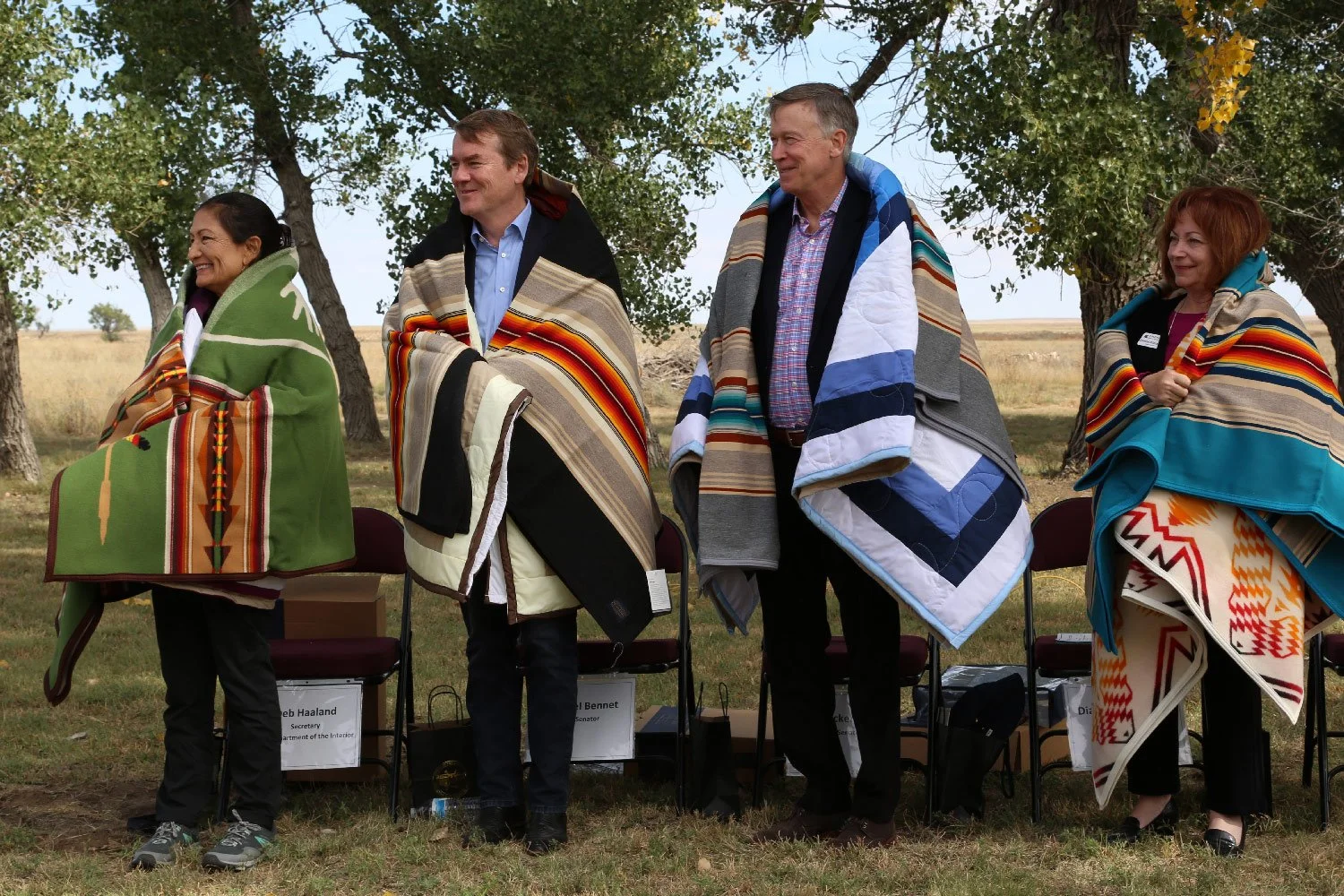
Remembrance
Never Forget
1909
The Sand Creek Massacre was redefined as a “battle” among many others in the list of Union engagements on Colorado’s Civil War monument in front of the State Capitol.
1950
The mischaracterization of the massacre as a ”battle” was repeated by local Chambers of Commerce on a granite marker placed on private property overlooking the massacre site on the same day the Colorado Historical Society placed a Sand Creek historical marker just outside the community of Chivington.
1998
The Sand Creek Massacre National Historic Site Study Act of 1998 (P.L. 105-243) was signed into law. It directed the National Park Service, in consultation with the Cheyenne and Arapaho Tribes of Oklahoma, the Northern Cheyenne Tribe, the Northern Arapaho Tribe, and the State of Colorado to verify the location and extent of the Sand Creek Massacre site and study the feasibility of designating it as a unit of the national park system.
2000
The Sand Creek Massacre National Historic Site Establishment Act was passed on November 7, 2000. Among other provisions, the Act authorized the National Park Service to acquire a sufficient amount of the Sand Creek Massacre site to protect and preserve it, and interpret its associated cultural values to enhance public understanding of the massacre and assist in minimizing the chances of similar incidents from happening again in the future (P.L. 106-465).
“[Congress’ approval of the Sand Creek Massacre National Historic Site is]… an overwhelming acknowledgment that Americans are better than their past.”
2007
The Sand Creek Massacre National Historic Site was officially established on April 28 and opened to the public on June 1, 2007.
2014
On the 150th anniversary of the massacre in 2014, then Colorado Gov. John Hickenlooper apologized to the Sand Creek ancestors.
“On behalf of the good, peaceful, loving people of Colorado, I want to say we are sorry for the atrocity that our government and its agents visited upon your ancestors.”
2020
Across the country, movements aimed to address social injustice rose up and took action. In Denver, the Civil War monument at the Capitol was toppled. Almost immediately conversation began to replace the monument with one honoring the Sand Creek Massacre.
2021
Colorado Governor Jared Polis signed Executive Order B 2021 002 rescinding the 1864 proclamations by Territorial Governor John Evans warning that “all hostile Indians would be pursued and destroyed.” While the proclamations never became law, and were superseded by the Colorado Constitution, United States Constitution, and Colorado criminal code when Colorado became a state, they had remained on the books and had never been rescinded.
2022 Land Dedication Ceremony; from left: Secretary Deb Halaand, Senator Michael Bennet, Senator John Hickenlooper, Lieutenant Governor Dianne Primavera
2022
The Sand Creek Massacre National Historic Site added 3,478 acres of land to its preserve, more than doubling its size. Cheyenne and Arapaho representatives and massacre descendants, representatives of the National Park Service, Senators Hickenlooper and Bennet, and Secretary Deb Haaland attended the Land Dedication Ceremony in October.
History Colorado unveils the groundbreaking exhibit, The Sand Creek Massacre: The Betrayal That Changed the Cheyenne and Arapaho People Forever. Written and designed by Cheyenne and Arapaho descendants of the massacre, the highly acclaimed exhibit has won numerous awards for finally presenting an unfiltered story of the Sand Creek Massacre through the voices of its descendants.
2024
Replacement of the former Civil War Monument at the Colorado State Capitol with one memorializing the Sand Creek Massacre was underway. Colorado legislation addressing inclusion of instruction about the Sand Creek Massacre in public school education was adopted.
After 160 years, publications, writings, artworks, collaborations, exhibits and public events are recognizing and acknowledging the truth and legacy of the Sand Creek Massacre.


